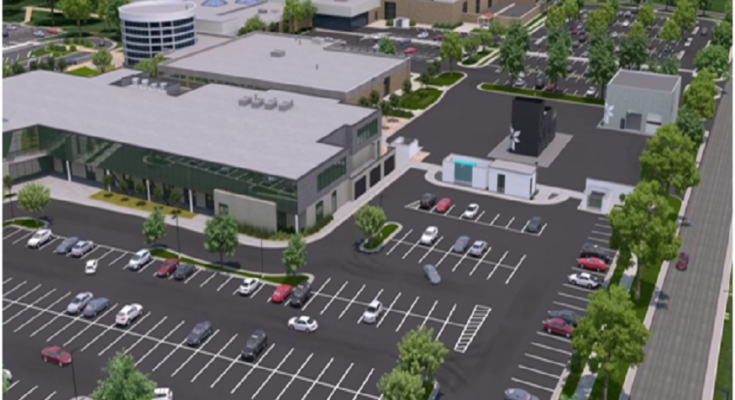The latest developments in rendering methods have made 3D architectural visualization rendering an intermediary between the ideas of design and construction. With sophisticated rendering methods, an architect, builder, and client can see every part of a structure before it has even been built. These 3D architectural rendering services allow all members of the design team to iterate on designs regarding layouts, materials, lighting, etc., resulting in improved communication and decision-making. The evolution of architectural visualization into a production phase of the design-to-construction process is the most recent step in this change.
What is 3D Architectural Visualization Rendering?
3D architectural visualization rendering is a digital process that creates real-like images and animations of architectural designs. Designers use specialized software to emulate lighting, textures, and spatial layouts in order to present a photorealistic view of proposed structures in the modification of the design process. In effect, it is an easy way to change a 2D drawing into a more realistic experience that allows for better understanding by the client and an accurate representation of the design.
Key Benefits of 3D Architectural Rendering Services
3D architectural rendering services provide several benefits both to professionals as well as the general public. They allow for visualization of complex drawings and ideas, provide better communication strategies, and speed up the entirety of the processes to seek approval to build. Key benefits to professional services include:
- Improved presentation of the designed space in a realistic visual format
- Saving costs on making changes to the design before construction
- Improved collaboration among architects, clients, and contractors
- Streamlining the approval process visually with an accurate and believable representation
Each of these benefits contributes to faster project delivery and minimized design errors.
are appropriate at different points in a project and for distinct client objectives. The client will better understand the project, ranging from conceptual sketches to photorealistic representations.
Common types include:
- Exterior Rendering: Represents the exterior envelope of a building and context.
- Interior Rendering: Showcases the layout of interior spaces, furniture, and lighting.
- 3D Floor Plans: Allows non-technical clients to better interpret the spatial quality of a project.
- 360° Virtual Tour: Allows clients to interactively navigate and explore the space.
Each type helps tell the story of a project and helps engage the audience with the design.
How Architectural 3D Visualization Can Improve Real Estate Marketing
Architectural visualization continues to be a valuable resource in the development, marketing, and sale of real estate. Developers and agencies rely on visualization to sell a future project in an appealing way before the site is constructed or completed. 3D walkthroughs and virtual staging allow potential buyers to experience a property as if they were in the finished building. This practice builds trust with the buyer, improves pre-sales, and reduces costs in a traditional photography marketing plan.
Programs Used for 3D Architectural Rendering
Modern rendering relies on high-quality software to provide an accurate level of detail and realism. Each program has its own advantages depending on the phase of the project.
Popular tools include:
| Software | Primary Use | Strength |
| Autodesk 3ds Max | Interior/Exterior Rendering | Advanced realism |
| SketchUp | Conceptual Modeling | Ease of use |
| V-Ray | Lighting and Texturing | Photorealistic output |
| Lumion | Real-time Rendering | Speed and animation |
| Blender | 3D Modeling & Rendering | Open-source flexibility |
Using these tools ensures consistent quality and creative freedom across all visualization stages.
The Importance of Lighting and Material in Simulated Rendering
The realism of lighting and materials is fundamental in presenting photo-realistic work. Reflectivity, shadows and materials can seamlessly take simple models into photorealistic rendering.
Using high-quality materials with realistic renderings of light (glass, concrete, wood) can invoke a sense of mood, visual scale, and space perception; all of which bring the architect’s vision, thoughts and concepts and reality.
1. Filling the communication gap between designers and the client
The use of 3D visuals practically removes any communication gap as they allow the clients to visually see the ideas from abstract plans. Clients can almost immediately understand the idea of the project visually, allowing the client the thought to provide informed and valuable feedback for the team that will allow for proper adjustments in a timely and resourceful manner.
2. Assisting with Construction and on site execution
The use of 3D renders can be a visual guide during a project for construction teams to adhere to in every aspect of design phase and/or project. 3D renders also tacit understanding when it comes to interpretation of the architecture and design by different trades such as engineers and contractors; all of whom view the design with and interpretation with their own field expertise.
3. Virtual Reality (VR) and how it applies to Architectural Rendering
Utilizing VR features takes the architectural rendering experience beyond immediate visual experience steel renderings. Clients can virtually walk through spaces, beyond static renderings and words, can interactively engage the experience from the dimensions of the space; stretching its perspective and visually experiencing the whole space as the design is as well. VR can potentially change how design review meetings and overall client presentations are carried out.
4. Future Trends in Architectural Rendering Technology
The future of architectural visualization lies in AI-driven rendering, real-time simulation, and cloud-based collaboration. These innovations promise faster turnaround times and even more immersive design experiences.
FAQs
- What is the difference between 3D architectural visualization and rendering?
Visualization involves creating and presenting 3D models, while rendering is the process of generating realistic images or animations from those models. Together, they form a complete visual communication tool. - Why are 3D architectural rendering services important for architects?
They help architects present realistic visuals, identify design flaws early, and gain client approvals faster. This enhances creativity and project efficiency. - How long does it take to create a 3D architectural rendering?
Project duration depends on complexity, but simple renderings may take a few hours, while detailed, photorealistic ones can take several days to finalize. - Can 3D renderings be used for renovation or remodeling projects?
Yes, 3D renderings are ideal for renovation projects as they allow clients to visualize design updates before construction or demolition begins. - What makes a rendering truly photorealistic?
Realism comes from accurate lighting, textures, reflections, camera angles, and post-production enhancements. These elements together create a visually convincing scene.




